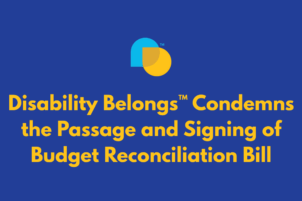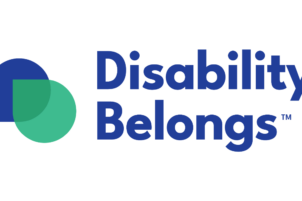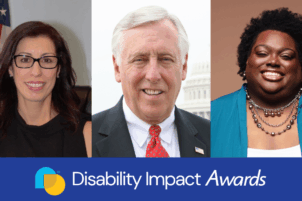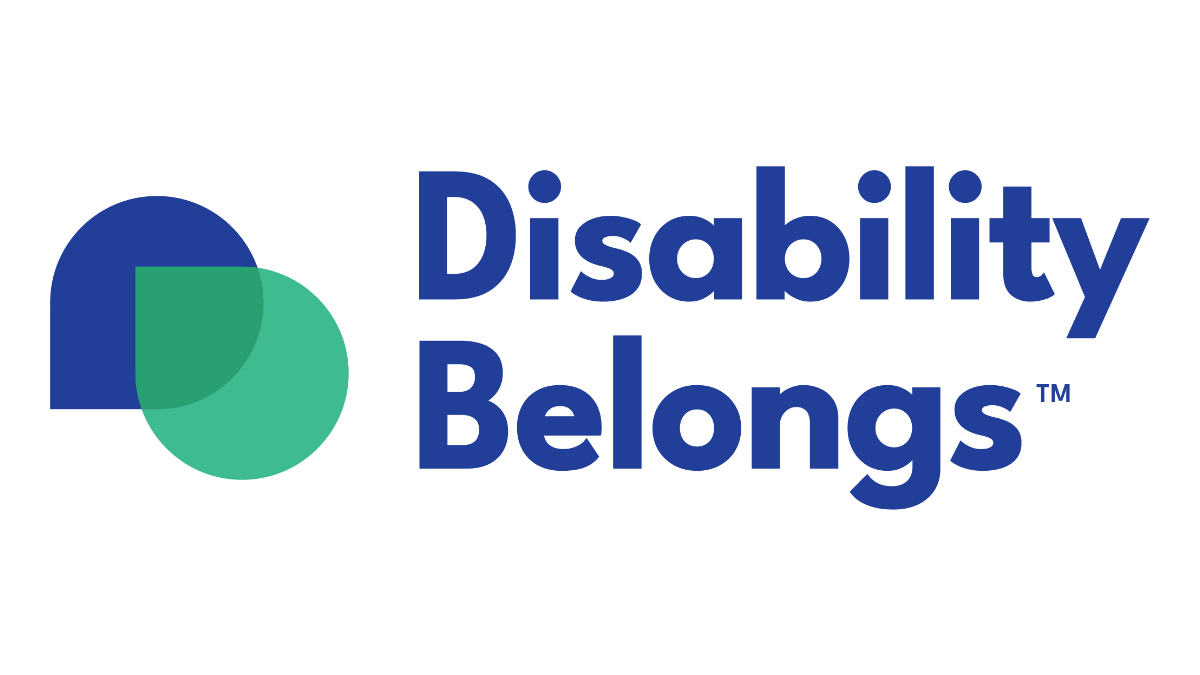Barely 29,000 new jobs for people with disabilities in 2018.
- Only 29,893 people with disabilities entered the workforce in 2018, a ten-fold decrease compared to the more than 343,000 new jobs for people with disabilities two years ago.
- Arizona saw the biggest job gains of any state, adding more than 17,000 people with disabilities to the state’s economy.
- At the same time, California saw the biggest job losses among people with disabilities, with more than 21,000 workers with disabilities leaving the labor force.
Washington, D.C., Feb. 24 – New statistics show that job gains among Americans with disabilities have dramatically fallen compared to previous years of sustain growth. The Disability Statistics Compendium, released earlier this month by the Institute on Disability at the University of New Hampshire, shows that the national disability employment rate has only risen to 37.6 percent compared to 37 percent last year.
Out of the more than 20 million working age (18-64) people with disabilities, only 7.6 million have jobs. There remains a serious gap in the Labor Force Participation Rate (LFPR) between people with and without disabilities. In 2018, 37.6 percent of U.S. civilians with disabilities ages 18-64 living in the community had a job, compared to 77.2 percent for people without disabilities. That means there is a stunning 40-point gap in employment outcomes between people with and without disabilities. Even as other minority groups are entering the workforce in larger and larger numbers, people with disabilities are being left behind.
The nonpartisan advocacy group RespectAbility compared this year’s Compendium to previous years. What they found is that nationwide, there were only 29,893 new jobs for people with disabilities in 2018. This is a precipitous drop from the previous year’s increase of more than 111,000 new jobs and a ten-fold decrease compared to the 343,000 new jobs experienced by people with disabilities in 2016.
“The disability community needs to take a hard look to better understand the catastrophic results we are seeing in the job numbers,” said Philip Kahn-Pauli, policy and practices director of RespectAbility. “When you look across the intersection of disability and race, you find even bigger gaps in outcomes.”
Only 29.7 percent of African Americans with disabilities have jobs compared to 74.4 percent of African Americans without Disabilities. Likewise, only 39.4 percent of Latinx people with disabilities have a job compared to 76 percent of those without disabilities. Moreover, only 43.2 percent Asian-Americans with disabilities have jobs compared to 74.6 percent of Asians without disabilities.
While job gains nationwide are down for job seekers with disabilities, some states are succeeding at getting more people with disabilities jobs. For example, more half of all people with disabilities in North Dakota and South Dakota are employed compared to only 28 percent of West Virginians with disabilities.
Of the 50 states in the Union, only 26 states saw more people with disabilities entering the workforce. California is emblematic of the struggle to get more and more people with disabilities into the workforce. As documented by RespectAbility last year, more than19,000 Californians with disabilities had gained new jobs in 2017. However, those gain have since been wiped out with a net loss of more than 21,000 workers with disabilities leaving the workforce and widening the gap in employment rates.
By contrast, Arizona saw the largest single job gain among people with disabilities in 2018. The data shows that 17,419 Arizonans with disabilities got jobs in 2018, putting the Grand Canyon State far ahead of the rest of country on getting people with disabilities into the workforce.
Arizona Gov. Doug Ducey released an official statement that credited self-advocates and Arizona’s business community for embracing diverse talent. “Every Arizonan deserves the opportunity to connect with meaningful jobs and contribute to society in their own unique way,” said Governor Ducey. “Individuals with disabilities bring invaluable strengths to any workplace — making an inclusive workforce a strong workforce.”
Why do some states succeed while others fail to capitalize on the talents of employees with disabilities?
While the health and growth of the national economy is critical, having the right policies and practices in place at the state level is critical.
Reducing that gap in employment outcomes requires that states have clear goals in place and that state leaders are held accountable for their efforts. Florida is another success story where clear goals and interagency cooperation have resulted in thousands of new jobs. Fully 9,802 Floridians with disabilities got new jobs this past year, and they have consistently had some of the biggest job gains among workers with disabilities each year. The reason why? Florida’s efforts are coordinated by the Florida Agency for People with Disabilities (APD). APD is a major state agency with written agreements in place, specific goals for each agency and the results speak for themselves.
RespectAbility President Jennifer Laszlo Mizrahi has a clear vision of what it will take to get more states to succeed: “Persistence and accountability are crucial to close the gap in labor force participation rates between people with and without disabilities.”
Achieving that goal will require state leaders to revisit some of the pioneering work in the recent past to get more people with disabilities into the workforce. In 2012, the National Governors Association harnessed the collective attention of America’s governors on the Better Bottom Line initiative in 2016, the Council of State Governments’ collaborated to create the Work Matters framework for states workforce development solutions for people with disabilities. This led to big subsequent job gains.
Mizrahi argues that “getting more people with disabilities into the workforce cannot just be a one-and-done, single year commitment that ends as soon as a report is published.” She went on to say that “positive impact requires continued focus and attention by the states.”
The success or failure to get more and more people with disabilities integrated into the workforce impacts thousands of communities and millions of families nationwide. According to the Census Bureau, there are more than 56 million Americans living with a disability. Disabilities include visible conditions such as spinal cord injuries, visual impairments or hearing loss and nonvisible disabilities such as learning disabilities, mental health or Autism.
Disability issues are poised to get greater national attention as the year gets closer and close to the presidential election in November. Research conducted in the 2018 election shows that 74 percent of likely voters either have a disability themselves or have a family member or a close friend with disabilities.
To earn those votes, many of the Democratic presidential candidates have brought special attention to disability issues by public releasing comprehensive disability plans and speaking publicly about what they would do if elected. You can read more about those plans and see which candidates have made disability part of their platforms here: https://therespectabilityreport.org/2020/01/22/2020-disability-voter-guide.
For a more comprehensive break down of key statistics on disability employment, education and demographics, please visit RespectAbility’s website here: https://www.respectability.org/statistics.
Media Contact:
Lauren Appelbaum, Vice President, Communications
LaurenA@RespectAbility.org | 202-517-6272
States Ranked by the Gap in Employment Rates between People with and without Disabilities
| State Ranking | States | Total Working Age People with Disabilities | # of Working-Age People with Disabilities with Jobs | People with Disabilities Employment Rate | People without Disabilities Employment Rate | Gap in Employment Rates | Job Gains and Losses in 2018 |
| U.S. | 20,212,750 | 7,602,698 | 38 | 77.8 | 40.2 | 29,893 | |
| 1st | ND | 38,215 | 21,598 | 57 | 83.4 | 26.9 | 579 |
| 2nd | SD | 53,828 | 29,037 | 53.9 | 83.2 | 29.3 | 3,618 |
| 3rd | WY | 35,797 | 17,274 | 48 | 80.5 | 32.2 | -1,789 |
| 4th | MT | 67,140 | 31,719 | 47 | 80 | 32.8 | -216 |
| 5th | NE | 106,943 | 53,637 | 50.2 | 83.6 | 33.4 | -1,754 |
| 6th | UT | 155,329 | 72,186 | 47 | 79.9 | 33.4 | -2,568 |
| 7th | AK | 51,416 | 21,966 | 43 | 76.5 | 33.8 | -1,849 |
| 8th | CO | 310,982 | 147,035 | 47 | 81.3 | 34 | 5,344 |
| 9th | NV | 184,884 | 78,230 | 42.3 | 77.2 | 34.9 | 4,262 |
| 10th | MN | 296,481 | 145,820 | 49.2 | 84.3 | 35.1 | 123 |
| 11th | ID | 117,561 | 49,464 | 42.1 | 78.1 | 36 | -5,484 |
| 12th | TX | 1,639,624 | 659,558 | 40.2 | 76.4 | 36.2 | 11,581 |
| 13th | IA | 174,957 | 81,251 | 46.4 | 82.9 | 36.5 | 3,505 |
| 14th | KS | 194,225 | 87,802 | 45.2 | 82.1 | 36.9 | -1,267 |
| 15th | AZ | 449,009 | 173,613 | 38.7 | 75.7 | 37 | 17,419 |
| 16th | MD | 341,159 | 149,359 | 43.8 | 80.8 | 37 | 7,489 |
| 17th | OR | 295,114 | 122,184 | 41.4 | 78.4 | 37 | 13,157 |
| 18th | HI | 66,355 | 28,503 | 43 | 80.1 | 37.1 | 2,957 |
| 19th | OK | 327,111 | 129,170 | 39.5 | 77 | 37.5 | 1,562 |
| 20th | WA | 478,622 | 195,251 | 40.8 | 78.8 | 38 | 303 |
| 21st | NM | 159,258 | 53,008 | 33.3 | 71.6 | 38.3 | -3,997 |
| 22nd | CA | 1,896,634 | 700,456 | 36.9 | 75.6 | 38.7 | -21,080 |
| 23rd | NH | 90,754 | 39,742 | 43.8 | 82.6 | 38.8 | 3,673 |
| 24th | VT | 44,257 | 18,761 | 42.4 | 81.4 | 39 | -3,473 |
| 25th | VA | 485,460 | 194,796 | 40.1 | 79.2 | 39.1 | -9,307 |
| 26th | CT | 180,465 | 70,229 | 38.9 | 79.4 | 40.5 | -5,867 |
| 27th | GA | 658,811 | 238,875 | 36.3 | 76.8 | 40.5 | 10,980 |
| 28th | DE | 61,531 | 22,508 | 36.6 | 77.2 | 40.6 | 2,932 |
| 29th | IL | 675,092 | 257,496 | 38.1 | 78.8 | 40.7 | -5,968 |
| 30th | WI | 322,172 | 135,105 | 41.9 | 82.8 | 40.9 | -7,180 |
| 31st | LA | 374,421 | 121,952 | 32.6 | 73.7 | 41.1 | -731 |
| 32nd | FL | 1,247,620 | 438,440 | 35.1 | 76.3 | 41.2 | 9,802 |
| 33rd | OH | 844,409 | 323,356 | 38.3 | 79.5 | 41.2 | 13,691 |
| 34th | RI | 80,903 | 30,478 | 37.7 | 79 | 41.3 | -309 |
| 35th | NJ | 417,347 | 156,502 | 37.5 | 79.3 | 41.8 | -5,227 |
| 36th | PA | 885,157 | 333,140 | 37.6 | 79.4 | 41.8 | 3,380 |
| 37th | MA | 384,133 | 146,757 | 38.2 | 80.1 | 41.9 | -2,876 |
| 38th | NC | 680,863 | 239,666 | 35.2 | 77.2 | 42 | 6,791 |
| 39th | IN | 472,444 | 178,093 | 37.7 | 79.8 | 42.1 | -6,250 |
| 40th | MI | 730,791 | 259,363 | 35.5 | 77.6 | 42.1 | 13,167 |
| 41st | NY | 1,061,050 | 360,749 | 34 | 76.8 | 42.8 | -18,202 |
| 42nd | WV | 175,002 | 49,839 | 28.5 | 71.3 | 42.8 | 640 |
| 43rd | SC | 366,373 | 122,332 | 33.4 | 76.5 | 43.1 | -457 |
| 44th | MO | 446,516 | 161,852 | 36.2 | 79.6 | 43.4 | -10,431 |
| 45th | MS | 262,760 | 74,874 | 28.5 | 72.1 | 43.6 | 1,671 |
| 46th | AL | 417,381 | 121,576 | 29.1 | 73.2 | 44.1 | 9,546 |
| 47th | TN | 552,942 | 184,851 | 33.4 | 77.2 | 43.8 | 5,802 |
| 48th | AR | 275,710 | 86,243 | 31.3 | 76.1 | 44.8 | -1,677 |
| 49th | ME | 114,014 | 42,411 | 37.2 | 82.8 | 45.6 | 2,987 |
| 50th | KY | 417,808 | 127,820 | 30.6 | 76.5 | 45.9 | -2,134 |








